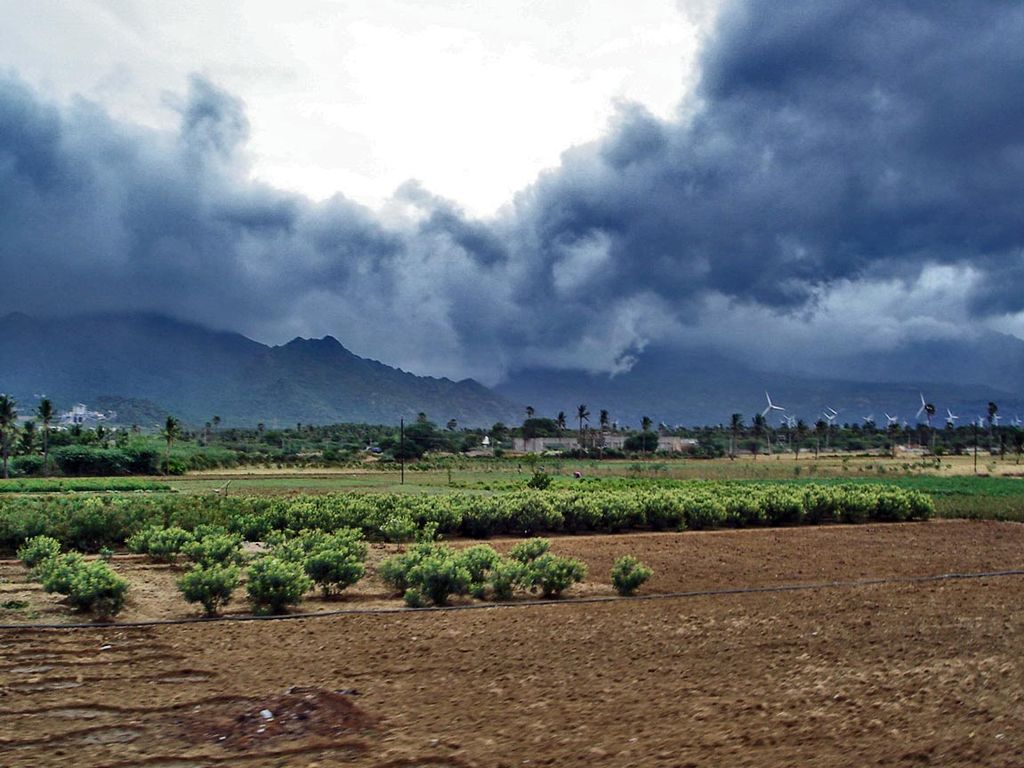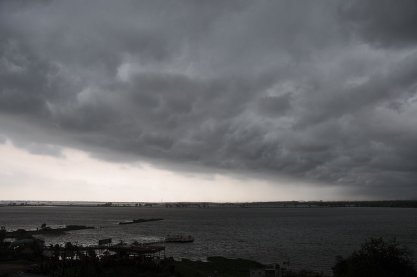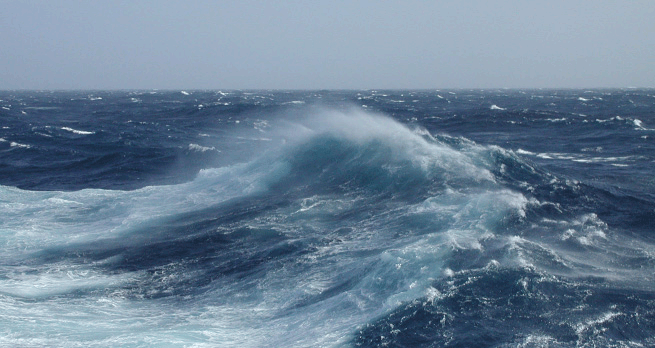This article is part of our collection on the 'Golden Globe Ocean Race' where former Open University student Antoine Cousot is circumnavigating the globe for 30,000 miles, alone. Our academics are championing this by getting you to explore information, science and ideas about the ocean with their explainer articles.
What is a monsoon?
The word monsoon comes from the Arabic word “mausim” meaning season. The monsoon is recognised as seasonal reversal of wind patterns. During the boreal summer, the northern hemisphere receives higher solar insolation than the southern hemisphere. As a result the northern hemisphere landmass heats up and the warm air rises creating a low pressure. In contrast, the ocean waters are slow to warm and thereby air above the ocean is cooler, moist and dense creating a high pressure. [The specific heat of water is greater than dry land, therefore water absorbs and emits heat slower than the land.] The air moves from high pressure to low pressure and as the air travels over the ocean it picks up more moisture. During winter, the land cools faster than the oceans and the wind reversal occurs. This time the air moves from land to the ocean and therefore it is drier. This seasonal reversal of the wind pattern is known as monsoon.
Most of Earth’s rainfall is located in the tropical rain belt which on average resides around 6° N of the equator. The zone where trade winds meet from the opposite directions around the equator dictates this position of the tropical rain belt: northeast from the northern hemisphere and southwest from the southern hemisphere. This zone of convergence is known as Inter Tropical Convergence Zone (ITCZ). The ITCZ position is affected by the differential heating and cooling of the hemispheres, therefore, changes seasonally due to Sun’s position. It follows that the ITCZ shifts towards warmer hemisphere, for example, during the northern hemisphere summer the ITCZ moves northwards as the northern ice cover and albedo reduces.
Following the position of the ITCZ, tropical monsoon system encompasses North America, Africa and Asia. However, the Asian monsoon is by far the most dramatic and the largest in its ariel extent. The subsystems of the Asian monsoon are: East Asian affecting China, Japan and the Far East, Indian or south Asian affecting India, Pakistan, Bangladesh and Myanmar, south East Asian affecting Indonesia and northern Australia. The Indian or south Asian monsoon is by far the most iconic of them all impacting billions of people. During the boreal summer months from June to September, moisture-laden winds, originating from the subtropical southern Indian Ocean, bring rain after a long spell of heat. These winds travelling in northeast direction when encounter Himalayan mountain ranges, releases moisture in the form of rainfall. While its arrival is welcoming after an intense heat, too much too quickly or too little too late, can have devastating impact on people’s livelihood in the Indian subcontinent. These seasonal rainfall supplies water for agriculture and recharges groundwater that provides drinking water for billions. Therefore, accurate predictability of the monsoon rainfall has huge impact on both food and water security in the Indian subcontinent.
The past is the key to the future
It is challenging to predict the patterns of Indian Summer Monsoon rainfall in response to current and future climate change. The reasons being that our current climate models, although being highly sophisticated, are not able to accurately simulate physical processes such as convection and evaporation that determines rainfall. Also, the monsoon is a result of complex system of land-ocean-atmosphere that interacts with other tropical and subtropical climate processes. Further, since the industrial revolution Earth’s climate has changed rapidly as a result of increase in global atmospheric greenhouse gas concentrations, ocean warming and decline in Arctic ice cover. Our knowledge of how these changes in Earth’s climate system impacts on the distribution of heat and moisture flux and atmospheric circulation in the low-mid latitude, thereby monsoon, is clouded with uncertainty. One way to further our knowledge and understanding of monsoon responses under varying climatic conditions is by using historical records or reconstructions from core monsoon regions of past monsoon parameters such as wind strength, rainfall and runoff during the warm intervals, abrupt climate transitions and rapid changes in greenhouse gas concentrations.
Our current knowledge of Indian summer monsoon rainfall and wind variability from the core Indian monsoon regions beyond last glacial is limited. Theoretically, in the warm climate one would expect air mass to hold more moisture thereby more intensified rainfall. However, due to less temperature contrast between land and ocean as a result of rising average global sea surface and land temperatures, one would expect weaker atmospheric circulation thereby less transport of moisture. The geological record of global warmth could help us understand how monsoon rainfall responded in the past with variable climatic conditions.
A recent study has shown that the Indian Summer Monsoon acts as a gatekeeper for the movement of heat and moisture originating from the southern hemisphere during the abrupt climate transition. You can find out more in the article below.





Rate and Review
Rate this article
Review this article
Log into OpenLearn to leave reviews and join in the conversation.
Article reviews